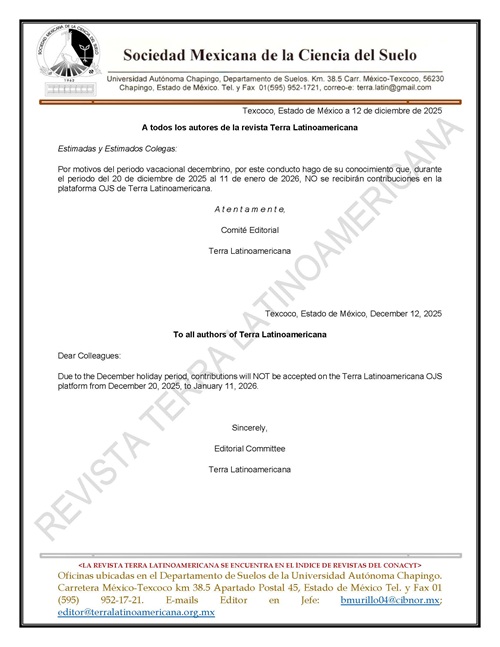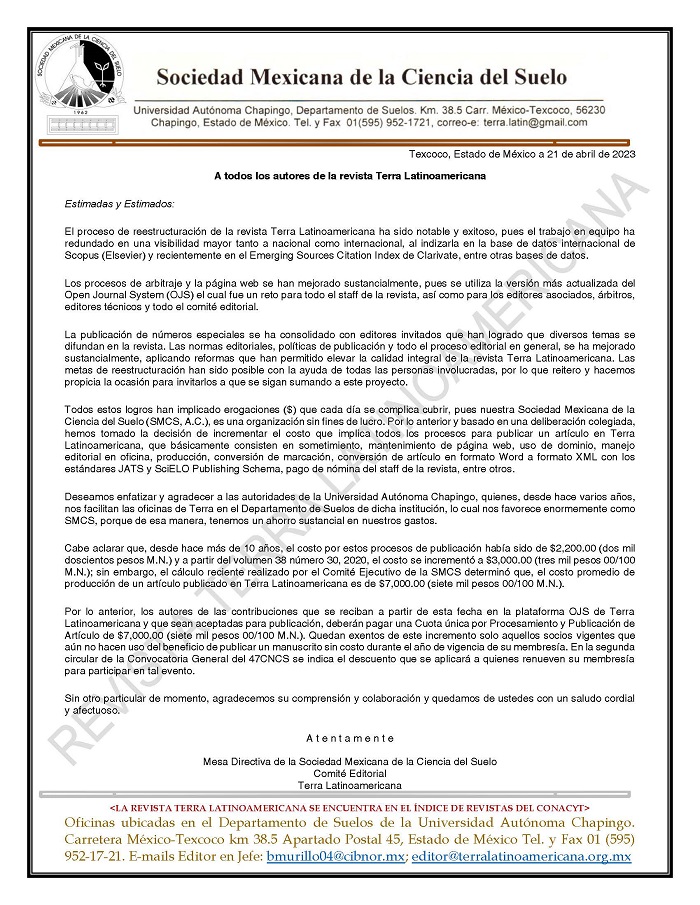Quitating capacity of the chitosan over the soluble arsenic in two fluvisols from an arid zone of Mexico
DOI:
https://doi.org/10.28940/terra.v38i2.472Keywords:
arsenates, pollution, metalloidsAbstract
Chitosan in pearls and acidic pH (Q) has the ability to adsorb arsenic (As) from water. The Q could adsorb the As found in the soil solution. The objective of this research was to evaluate the chelating capacity of Q adjusted to acidic and neutral pH to decrease the concentration of soluble As in two Fluvisols. To carry out the experiment, Q was conditioned at two pH (5 and 7) with the addition of sulfuric acid and Q was left untreated for use as a control. Four treatments were tested (soils without Q, with untreated Q, with Q adjusted to pH 5 and with Q adjusted to pH 7). Each treatment was conducted in quadruplicate, making 16 experimental units for each soil. Each experimental unit consisted of 500 g of soil packed in a plastic bag, to which a phosphate fertilizer (200 mg kg‑1) was added and brought to field capacity, leaving it to stand for 48 h. Upon completion of the resting time, 0.063 g of Q of the corresponding treatment and its respective replicate were added to each bag, leaving them in incubation for 48 h at a temperature of 25 °C. The experimental design used was completely random. To the soils, the soluble As content was determined by an extraction with deionized water and the extracted was measured by the method of atomic absorption spectrophotometry with hydride generation. The data was subjected to an analysis of variance and a test of means (Tukey, P ≤ 0.05). The results showed that the chitosan adjusted with sulfuric acid at pH 5, (QpH5) adsorbed the greatest amount of soluble As (640%). Which represents an alternative for the recovery of soils contaminated with As.
Downloads
Publication Facts
Reviewer profiles N/A
Author statements
- Academic society
- Terra Latinoamericana
- Publisher
- Mexican Society of Soil Science, C.A.

















